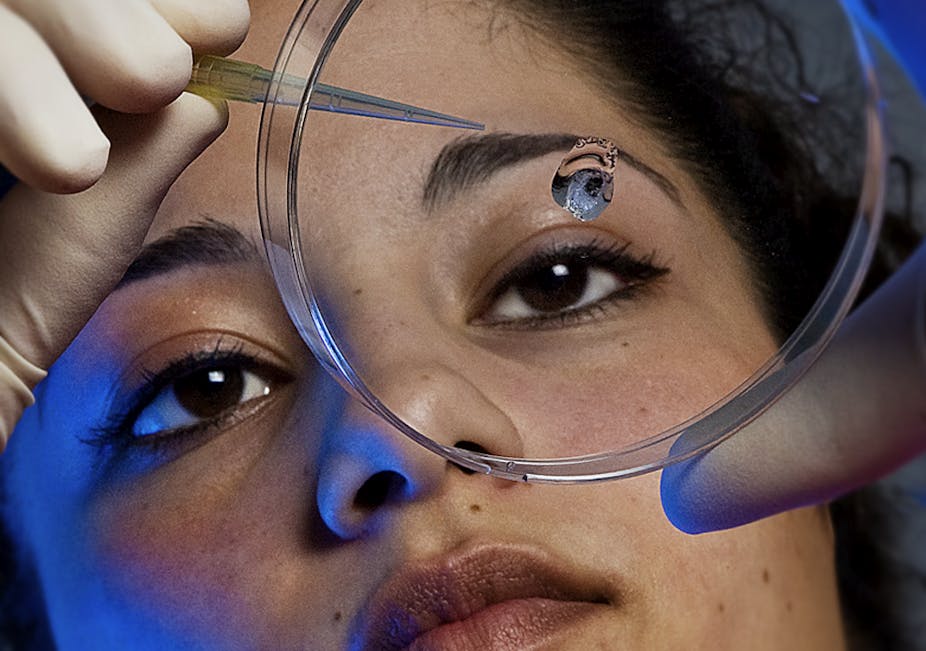Including $20 billion for medical research in the recent federal budget seemed like a win for research. At the same time, however, the government imposed fees on PhD and Masters research students. Paying fees may not be a choice that many aspiring research students will make, so while $20 billion to medical research is great, who’s actually going to do the research?
Research students are giving, not taking
Students studying for a PhD or Masters by Research degree are key members of Australia’s research workforce. Unlike students of coursework degrees, graduate research students are creators of knowledge who make a profound and critical contribution through the research they produce. Indeed, it is in recognition of this fundamental difference that PhD candidates in the European research sector are funded and treated as part of the research workforce rather than as students.
For most of its more than 60-year history in Australia, graduate research education has been deemed by governments of both complexions as a public good. It has been recognised as a level of educational attainment that brings benefits to the community over and above any benefits it brings individual graduates. For this reason, it has been largely (although inadequately) publicly funded, most recently through the Research Training Scheme, which is the Commonwealth block grant that supports research training for domestic students.
The important role played by these students has been swept aside in the recent budget. The Research Training Scheme will be cut and Australian graduate research students will be asked to cover the gap (international research students are already charged full fees). Students in sciences, technology, engineering and medicine will pay $3,900 per year and those in the arts and humanities will pay $1,700.
In order to develop “one of the best higher education systems in the world”, we will ask the students themselves to pay for it.
Public good outweighs private benefit
The budget delivers the fee deregulation we had to have. It is clear that without this budget measure there is simply not enough in the kitty to keep our universities functioning at the current level, never mind being among the very best in the world.
The logic behind fee deregulation is clear. Why shouldn’t those who directly benefit from the higher education system pay some of its costs? The budget papers, based on the Grattan Institute’s Graduate Winners report, state that “Over their lifetime on average graduates earn 75% more than school leavers”. In some professions, the private benefit is significant. The expectation that the recipients of this benefit should contribute to their education is difficult to argue against.
However, this reasoning is flawed when applied to graduate research students. Not only is the research output of Australia’s universities dependent on graduate research students, the wider research sector relies on a workforce trained in our universities.
This contribution to the public good is not matched by a private benefit. Many graduate research students – especially in the key “innovation” disciplines in engineering and technology – pursue their doctoral work at a real financial and opportunity cost to themselves. They sacrifice significant income to undertake research on stipends set below the minimum wage and well below the salaries they could command in enterprises.
Added to this, research graduates who pursue academic careers sacrifice income potential in industry and the private sector. To ask such students to pay for something that is already costing them tens of thousands of dollars in income forgone does not make sense.
The demand for Research Training Scheme places in Australia’s universities has not risen with the increase in numbers of undergraduates and postgraduate coursework enrolments across the sector. Australian graduates are not selecting research pathways. Only time will tell whether fees will further deter our brightest young researchers from choosing a research career.
Impact on research
A fall in the Australian research student population will have a significant impact on the growth of a high-quality research workforce.
This is a critical issue as it risks reducing our capacity for innovation and reducing our contribution to the development of knowledge. Without a sizeable and well-trained research workforce we cannot hope to remain competitive in global knowledge economies.
The current Research Training Scheme funding model does not provide sufficient support for Australia’s ambitions of having the best higher education system in the world and charging research students is not a fix. It is an attempt to supplement funding that risks further harm to a sector already struggling to remain globally competitive.
What is needed instead is a new strategic vision for research and research training, and structural reform of research funding models. Australia deserves a broader, more innovative future than the one the government handed down to us on budget day.

